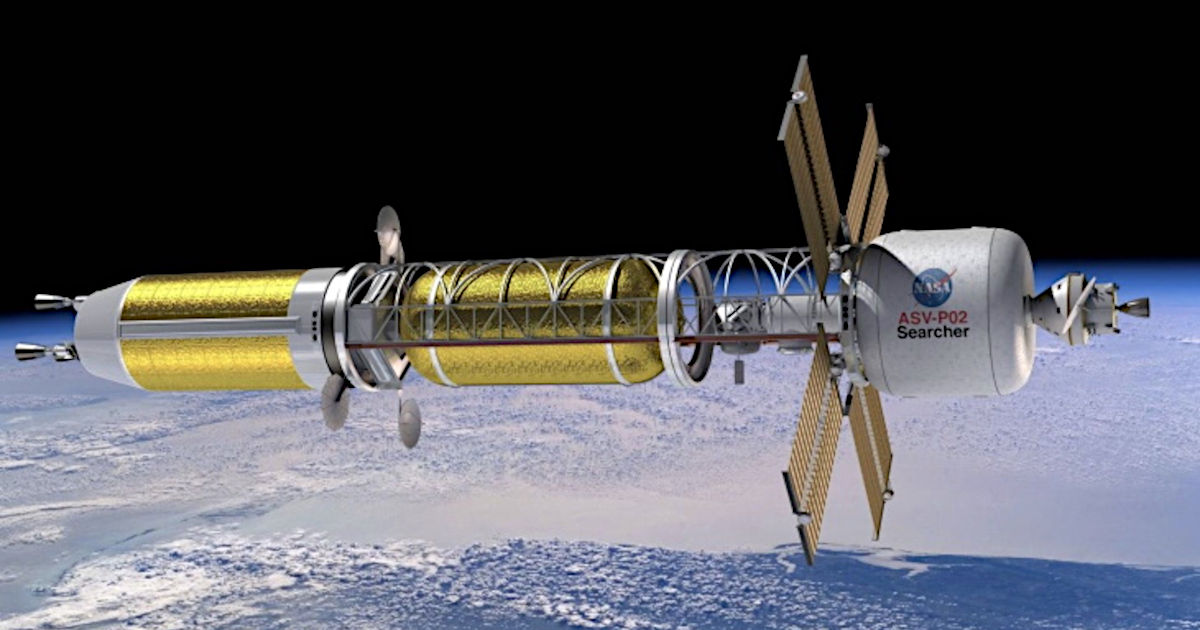Nuclear Spacecraft to Power Future of U.S. Space Program
The last NASA lead space shuttle mission was completed ten years ago next week (July 21). The next generation of U.S. crewed space missions will rely less on bottled fuel and more on nuclear propulsion. Among the 18 new Astronauts chosen as part of NASA’s Artemis Program is a Systems Engineer with a master’s degree in nuclear engineering.
NASA is in the planning and preparation stage of the immense task of working with the chosen astronauts and publicly owned corporations developing human landing systems, assisting in developing training, defining hardware requirements, and consulting on technical development.
Nuclear Propulsion Design
Yesterday (July 14, 2021), NASA and the Department of Energy (DOE) responded to requests for proposals by awarding three $5 million, 12-month contracts to three consortia to each produce a conceptual reactor design that could support future deep space missions. The companies are BWX Technologies (with Lockheed Martin); General Atomics Electromagnetic Systems (with X-energy and Aerojet Rocketdyne); and Ultra Safe Nuclear Technologies (with Ultra Safe Nuclear Corporation (USNC), GE Hitachi Nuclear Energy, GE Research, Framatome, and Materion). NASA said the contracts would fund the development of various design strategies for the specified performance requirements that could aid deep space exploration.
|
“Our national |
The next generation will rely on nuclear as the propulsion provides greater efficiency compared with chemical rockets. The developing technology holds promise to be the next driver for crew and cargo missions to Mars and science missions to the outer solar system, enabling faster and more robust missions.
Jim Reuter, the associate administrator for NASA’s Space Technology Mission Directorate, said: “These design contracts are an important step towards tangible reactor hardware that could one day propel new missions and exciting discoveries.”
Stephen Johnson, national technical director for space nuclear power and director of the Space Nuclear Power and Isotope Technologies Division at INL, added: “Our national laboratories, working in partnership with industry, bring unparalleled expertise and capabilities to assist NASA in solving highly complex challenges that come with nuclear power and propulsion.”
Time Frame
It is expected to take several years to develop tomorrow’s designs for advanced space travel. Nuclear power plants have been used for decades in submarines, aircraft carriers, and configuring these power generators to safely be placed in a rocket has obvious implications. As with space flight since the very first Mercury missions, new designs for space can lead to uses for the technology at home.
The nuclear space effort is part of a resurgence in extra-planetary activity, with the U.S. exploring Mars and planning the first astronauts back to the moon since Apollo 17 in 1972. One thing that has changed since then is public companies are being used by NASA as shuttles and there’s a race to create a space tourism industry.
Take-Away
While NASA and the National Laboratories assisting them are government-owned, the contractors for the upcoming projects will be awarded to private companies and consortium of companies. Many of these will be mega-companies like Lockheed others will be much smaller as they will possess the leading-edge technology. This is likely to provide opportunities for small companies to help in ways that will allow them to reap the rewards of their intellectual know-how for a customer with the deepest pockets here on Earth.
Suggested Reading:
 Capitalizing on the New Space Race
|
 Edge Computing Importance to AI Applications
|
 The Increasing Popularity of Uranium Investments
|
 Suborbital Flight Explained
|
Sources:
https://www.world-nuclear-news.org/Articles/US-looks-to-nuclear-propulsion-systems-to-reach-sp
https://www.world-nuclear-news.org/Articles/NASA-selects-reactor-concepts-for-deep-space-explo
https://inl.gov/research-program/space-power-systems/
Stay up to date. Follow us:

|
